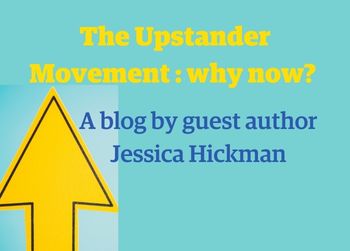Have you returned to work after the holiday period and feel a bit like this kid? You’ve had a break yet you don’t feel rested and rejuvenated? You certainly haven’t relished going back to work. It feels like you’re on a merry-go-round you can’t get off. It’s possible you could be at risk of burnout.
In a recent interview psychoanalyst Dr Josh Cohen explained “…that with burnout, the body collapses, so it is an involuntary rest…You feel you can’t move or do anything anymore but actually it’s accompanied by … a kind of overstimulation of the nervous system.”
Concerningly, the International SOS Risk Outlook Report 2024 published at the end of last year noted that “80% of surveyed global senior risk professionals predict burnout will have a significant impact on businesses in the next year. But only 41% of them feel that their organisations are equipped to deal with it.”
In the first few days of the new year media reported on a case where the Employment Relations Authority (ERA) had ruled in favour of an employee who claimed work-induced burnout. The employer, a large retail chain, was ordered to compensate the employee over $30,000.
Burnout, its causes and consequences have been covered in previous blogs. You can read them and access the resources collated within them through these links:
- Burnout
- Stages of burnout, triggers and warning signs by guest author Jess Stuart
- Identifying and addressing burnout
Burnout, unfortunately, remains an ongoing workplace issue. It has significant costs to a business as well as to individuals and society. So as another year begins we have collated some updated library resources for you.
Whether you are self-employed, an employer or an employee there’s something below to help you balance work and life, and build resilience to ongoing work/life stresses. Read on…
Your Burnout Is Trying to Tell You Something
Kandi Wiens, HBR Online, January 16, 2024
Research has established that burnout is primarily the result of psychologically hazardous factors that occur at your workplace. Not being given the resources or time you need to manage your workload, for example, or working in an environment where you have insufficient control and autonomy, are known burnout triggers. No two experiences of burnout are exactly alike, and recovery requires that you pinpoint the unique workplace conditions that are contributing to your stress. One way to do this is to use your self-awareness skills to tune in and discover what your experience of burnout is trying to tell you — indeed, what it’s been trying to tell you all along. Here are some of the vital and lesser-known messages that burnout can reveal, and what to do about them.
From LinkedIn
(Access to full courses are available with library registration)
Managing Burnout
Hope in the face of burnout
For many professionals, remaining constantly connected and on task can feel like a requirement for success. Long hours and chronic exhaustion are normalized—if not celebrated—in many workplaces. A lack of boundaries between work and life can cause workers who previously felt fulfilled to feel resentful and unhappy. In this course, Melody Wilding teaches you how to spot the signs of burnout, complete an inventory to determine if you are burned out, and how to recognize the distinction between internal and external causes of burnout. Melody explains ways you can address behaviors, conditions, and mindsets that lead to burnout—including overworking, unproductive responses to stress, and negative thought patterns. Finally, she shows you how to craft a strategy to prevent burnout, focusing on creating more sustainable goals, setting boundaries, finding support, and understanding what self-care is and is not.
How to Beat Burnout, Exhaustion, and Stress
Burnout is often assumed to be the consequence of overwork. But this is only partially true—exhaustion is merely one facet of burnout. In this audio-only course, learn about the factors that cause these overwhelming feelings of exhaustion, cynicism, and inefficiency; how you can prevent burnout from happening; and what you can do to recover from it. Dr. Jacinta M. Jiménez breaks down the key mismatches that usually cause burnout, as well as how to use the PULSE framework to guide your recovery. She also shares a few easy habits to help you build resilience, how helping others can help you heal your mind, and how to beat negative thinking with curiosity.
Burnout / Selhub, Eva M
“Chronic, unmanaged stress–at work, at home, or in other areas of life–can lead to burnout. Burnout For Dummies shows you the way toward understanding and overcoming this all-to-common condition of modern life. Many of us find ourselves living in a state of constant resignation, which sucks the joy out of life and can be detrimental to our physical health. The tips and exercises in this book can help you minimize stress, become more resilient and create a happier, healthier, and more satisfying life. Mindfulness and resilience guru Dr. Eva Selhub offers a science-based plan that you can use to destress, build inner resources and coping skills, and start enjoying life (and work) again.” (Catalogue)
All the gold stars : reimagining ambition and the ways we strive / Stauffer, Rainesford
“All the Gold Stars looks at how the cultural, personal, and societal expectations around ambition are driving the burnout epidemic by funnelling our worth into productivity, limiting our imaginations, and pushing us further apart. Through the devastating personal narrative of her own ambition crisis, Stauffer discovers the common factors driving us all, peeling back layers of family expectations, capitalism, and self-esteem that dangerously tie up our worth in our output”– Provided by publisher” (Catalogue) Also available as EAudiobook Libby
Slow Productivity : The Lost Art of Accomplishment Without Burnout / Newport, Cal
“… Long before the arrival of pinging inboxes and clogged schedules, history’s most creative and impactful philosophers, scientists, artists, and writers mastered the art of producing valuable work with staying power. In this timely and provocative book, Cal Newport harnesses the wisdom of these traditional knowledge workers to radically transform our modern jobs. Drawing from deep research on the habits and mindsets of a varied cast of storied thinkers … Newport lays out the key principles of “slow productivity,” a more sustainable alternative to the aimless overwhelm that defines our current moment. Combining cultural criticism with systematic pragmatism, Newport deconstructs the absurdities inherent in standard notions of productivity, and then provides step-by-step advice for cultivating a slower, more humane alternative. From the aggressive rethinking of workload management, to introducing seasonal variation, to shifting your performance toward long-term quality, Slow Productivity provides a roadmap for escaping overload and arriving instead at a more timeless approach to pursuing meaningful accomplishment. The world of work is due for a new revolution. Slow productivity is exactly what we need.” (Adapted from Catalogue)
The book of burnout : what it is, why it happens, who gets it, and how to stop it before it stops you / Aisbett, Bev
“Australia’s bestselling anxiety and mental health author, Bev Aisbett, tackles a growing mental health emergency: burnout. Burnout happens when we take on too much, when we think we can do the impossible, at the cost of our wellbeing, our health and even our quality of life. Although the term is often casually tossed about, burnout is no joke – it can impact every area of your life and leave you depleted in every way. After two years of the pandemic and lockdowns, working from home, homeschooling, widespread stress and being on our computers and devices 24/7 and constantly available, the danger of burnout for so many of us is all too real. It can happen to anyone. Using humour, straightforward language and her signature illustrations, Bev clearly explains what burnout is, who is at risk, how to recognise the danger signs and, finally, how to step back from the brink, providing insight and techniques to ease burnout and stop yourself going up in smoke”–Publisher’s description.” (Catalogue) Also available as EAudiobook Borrowbox, EBook Borrowbox, EBook Libby
Dear work : something has to change / Ross, Sara
“… Do you find yourself striving for big goals but running on fumes? Are you ever stuck in the frustrating cycle of overworking and under-living? Do you love the work you do–or at least used to–but feel overwhelmed by it?
When it comes to work and our relationship with it, something has to change. This doesn’t mean you need to bound out of bed every day in love with your work, nor do you need to settle for dragging yourself out of bed surviving your way through it, but you can feel a greater sense of aliveness engaging in it. Dear Work transforms traditional advice by using the power of brain science to show you how to boost your Work Vitality Quotient so you stand out, bringing your best, most energized self–without burning out.
Sara Ross, chief vitality officer and leadership expert, will show you how to: Identify the four “success traps” that limit your potential by luring you into thinking you’re doing what it takes when really what you’re doing is taking from you. Adopt a “yes, and” mindset to work better with stress and feel fueled and fulfilled in the process. Expand your approach to self-care to strategically identify when slowing down is needed and when accelerating in a different direction is even better.
In a world that refuses to let up, reigniting your take-on-the-day vitality will be your competitive advantage at work and your path to pursuing a fully lived life outside of it as well.”– Provided by publisher.” (Catalogue)
Balance your life and work : how to get the best from your job and still have a life
“There’s so much pressure to succeed at work that sometimes ‘real life’ tends to take a back seat. With the rise in flexible working and increased options to work from home, the boundaries have become even more blurred, and your relationships with friends, family, and children can all suffer as you try to cram everything into a ‘normal’ day. Whether you want to re-evaluate and improve your current situation, or opt for a complete change of scene with a career break, this book helps you figure out your own priorities and take positive action to make your life easier. It features:
Step-by-step guidance and actions plans;
Common mistakes and advice on how to avoid them;
Advice on how to identify flexible options in your life;
Ways to avoid stress and burnout;
Top tips and ideas to bear in mind for the future”–Publisher’s description.” (Catalogue)
If you need more information please contact the Prosearch team at the library. We can help you find information across a range of perspectives and resources. All enquiries are treated in confidence.








